This is part of a series of essays about the First World War casualties commemorated by the Commonwealth War Graves Commission in Virginia.
The first British military attaché in Washington DC was Major General J. D. McLachlan DSO, who had taken up his post in September 1917.[1] He was supported by an experienced and well-connected staff. When influenza struck—no discriminator between rich and poor, or the titled and working class—he lost two of his small team within days.
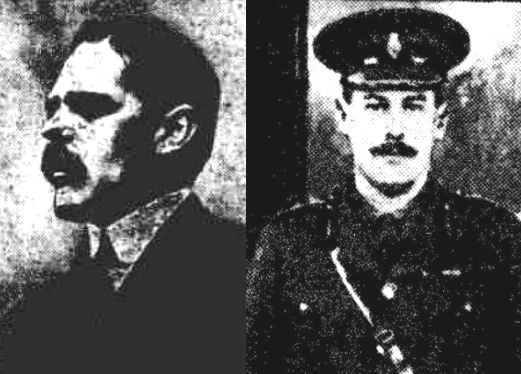
Major the Honourable Charles Henry Lyell
Charles Henry Lyell was born in London on 18 May 1875, the son of Leonard Lyell, a Scottish, Liberal Member of Parliament, who became the 1st Baron Lyell of Kinnordy on 4 July 1914. His mother, Mary Stirling, was Canadian and he had two younger sisters.
Lyell was educated at Eton and New College, Oxford. Upon leaving Oxford he became a private secretary before standing successfully for election to represent East Dorset in a by-election in 1904. He was re-elected in the 1906 general election and was appointed as Parliamentary Private Secretary to Sir Edward Grey, the Foreign Secretary. In the general election of 1910 he stood to represent Edinburgh West but he was not elected. At a by-election in April that year he was successful in being elected for Edinburgh South and won re-election in the second general election of 1910 that was held in December. In February 1911 he was appointed as the Parliamentary Private Secretary to the Prime Minister, H. H. Asquith.
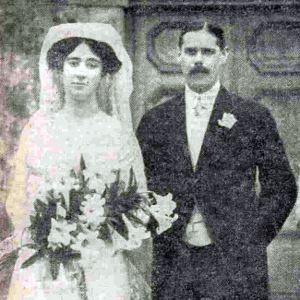
The Hon. Charles Henry Lyell married Miss Rosalind Margaret Watney at Cornbury Park, Oxfordshire on 18 May 1911. Their first child, a daughter, Margaret Laetitia, was born on 22 April 1912 and their second child, a son, Charles Anthony, was born on 14 June 1913.
Charles Lyell’s military career began in the Volunteer Rifle Corps—he served as a Second Lieutenant in 4th (Eton College) Volunteer Battalion, The Oxfordshire Light Infantry until he resigned his commission on 21 November 1894. Lyell was commissioned subsequently into The Forfar and Kincardine Royal Garrison Artillery (Militia) and promoted to Lieutenant on 1 August 1900. He served until 1908 when he transferred to the Reserve of Officers but continued his association with the volunteer forces as vice-chairman of the Forfarshire Territorial Association.
After war broke out, he was commissioned into the Highland (Fifeshire) Royal Garrison Artillery (Territorial Force) as a Captain on 16 September 1914. 1/1st Highland (Fifeshire) Heavy Battery was originally part of 51st (Highland) Division but when the Division sailed for France, the Battery, equipped with four 4.7-inch guns, was transferred to IV Heavy Brigade.[2]
Lyell was promoted to Major on 19 April 1915 and he commanded the Battery from its arrival in France on 4 May. On 21 November 1916 he was badly burned on the face and hands following an accident on a gun line and was forced to relinquish his command; he was mentioned in despatches.[3] Evacuated to hospital in England on 9 December, he took some time to recover from his injuries. In May 1917, he stood down as a Member of Parliament, having been appointed Steward and Bailiff of the Three Hundreds of Chiltern.[4]
Major the Hon. Charles Lyell was formally appointed as the Assistant Military Attaché in Washington DC on 22 December 1917, the day he sailed on the SS Baltic from Liverpool. He arrived in New York on 26 December, and took up his post on 2 January 1918.
Captain Angus Alexander Mackintosh, younger of Mackintosh
Angus Alexander Mackintosh, younger of Mackintosh was also a Scot. He was born on 6 August 1885 at Moy Hall, Inverness—the seat of the chiefs of the Clan Mackintosh since the 14thC. His father, Alfred Donald Mackintosh of Mackintosh, was the 28th Chief. His mother, Harriet Diana Arabella Mary Richards, was from a Glamorganshire family. Mackintosh younger grew up at the family home at Cottrell, St Nicholas, in Glamorganshire and was sent to school at Wixenford and Eton.
He was commissioned into the Royal Horse Guards, ‘The Blues’, on 4 July 1906 and promoted to Lieutenant on 5 July 1908. After a period of regimental duty at Windsor, which included the coronation of King George V, on 22 September 1913 he was appointed as the aide-de-camp to General Sir Arthur Paget, Commander-in-Chief of the Forces in Ireland. This was a time of turmoil in Ireland and Mackintosh witnessed at first hand the role of Paget in the Curragh mutiny, although there is no indication of what his feelings were on the matter.
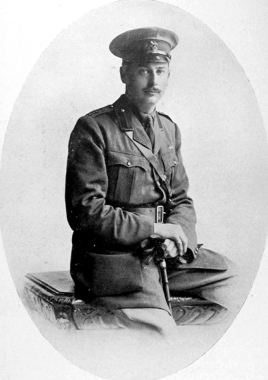
After war broke out Mackintosh returned to his Regiment at Combermere Barracks, Windsor and took command of a troop. The Royal Horse Guards joined 7th Cavalry Brigade, in 3rd Cavalry Division, at Ludgershall before embarking on the SS Basil (regimental headquarters and a squadron of The Life Guards) and the SS Cardiganshire (three squadrons of Royal Horse Guards), destined for Belgium. Lieutenant Mackintosh landed with his troop at Zeebruge on 8 October, concentrating with the rest of the Regiment east of Bruges. By 14 October the Regiment was in Ypres and it then took part in the operations east of the city. On 17 October his squadron, commanded by Captain Lord Alastair Innes-Ker, conducted a reconnaissance of Roulers, which was found to be clear of the enemy. Mackintosh was posted at the railway station with his troop, which was subsequently attacked by a squadron of enemy hussars. The enemy were beaten off ‘with severe casualties’.[5]

By 22 October the Regiment was in the area of Klein Zillebeke, where 7th Cavalry Brigade alternated with 6th Cavalry Brigade in the rudimentary trenches on the Zandevoorde Ridge. This position was held until 30 October when the strength of the enemy attack forced the squadrons on the ridge back to Klein Zillebeke. Two squadrons of The Blues were ordered to reinforce the Royal Dragoons, who held Hollebeke Chateau, south west of Klein Zillebeke. It was in this action Lieutenant Mackintosh was shot in the chest and severely wounded—one of 56 casualties from The Blues (three killed, 19 wounded and 34 missing).[6] He was evacuated to No.7 Stationary Hospital at Boulogne, where he was treated before being sent to hospital in England in mid-November.[7]
During his stay in hospital he had been promoted to Temporary Captain (1 November 1914) and promotion to Captain followed on 1 February 1915. After six months in hospital and convalescing at home he was posted to Headquarters Southern Command as a Grade 3 staff officer. In September 1915, Captain Angus Mackintosh was appointed as the aide-de-camp to Prince Arthur, Duke of Connaught and Strathearn, the Governor General of Canada. He arrived in Canada on board the SS Missanabie[8] on 3 October 1915 and took up his post as one of four aides-de-camp at Government House.
On 25 October 1916, having been nominated by Prince Arthur, Captain Mackintosh was made an Esquire in the Order of the Hospital of St John of Jerusalem in England.[9]
Prince Arthur had served as Governor General since 1911 and in November 1916 he was succeeded by Victor Cavendish, Duke of Devonshire. Mackintosh remained in post as one of his aides-de-camp. The Duke of Devonshire was, naturally, accompanied to Canada by his family.
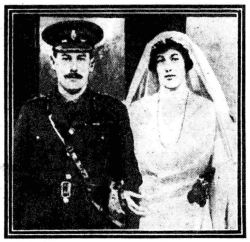
His second child and eldest daughter, Lady Maud, was 20 years old and she caught the ADC’s eye.[10] On 31 August 1917, a little under a year after they had met, their marriage was announced, by which time Lady Maud had turned 21. The couple were married on 3 November 1917, at Christ Church Cathedral in Ottawa. This was a society wedding the like of which had not been seen in Canada. Lady Maud was the first child of a Governor General to be married in the dominion and the occasion was the society event of the decade.
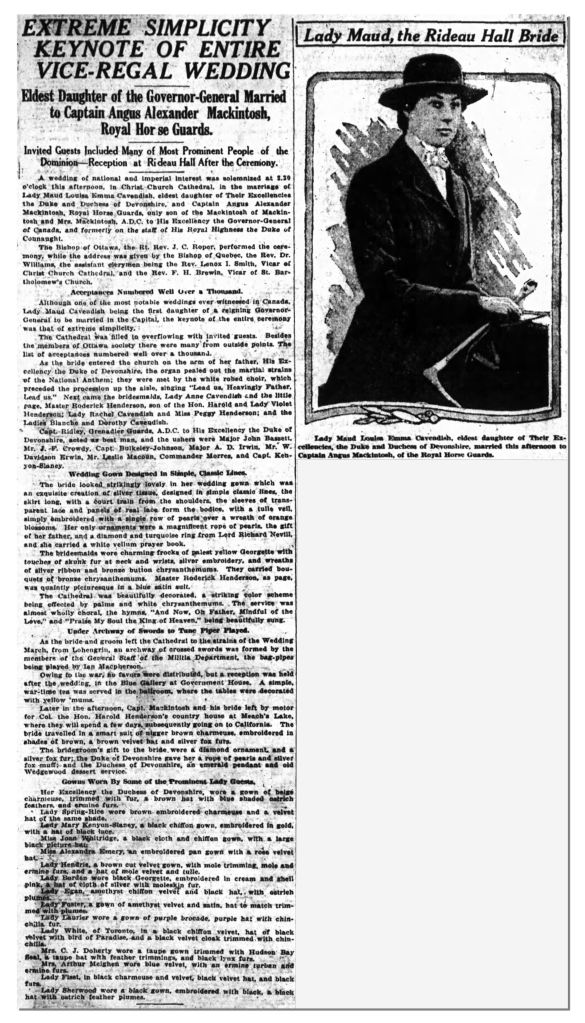 The couple set off for the first part of their honeymoon at nearby Meech Lake before journeying to California. By early January the couple had established themselves in Washington DC, where Captain Mackintosh joined the staff of the British War Mission as the Honorary Assistant Military Attaché on 9 January 1918.
The couple set off for the first part of their honeymoon at nearby Meech Lake before journeying to California. By early January the couple had established themselves in Washington DC, where Captain Mackintosh joined the staff of the British War Mission as the Honorary Assistant Military Attaché on 9 January 1918.
The first cases of influenza were observed in Washington DC in August 1918. They were initially confined to the naval station and local army camps but by the end of September civilian cases were increasing and in early October schools were closed and four emergency relief stations and an emergency hospital were opened (for whites only; the city’s Black population was not catered for until the end of the month). By early November the epidemic was seen to be in decline and restrictions were lifted but cases increased again in December. The epidemic continued until February 1919 by which time there had been over 33,000 cases and 2,895 deaths. It was ‘one of the more devastating epidemics in the nation’.[11]
In early October 1918 Lyell and Mackintosh fell ill with influenza.
Mackintosh had just returned from Canada. His wife, pregnant with their first child, had returned there in early September, after a summer spent in a cottage at Buena Vista Springs near Blue Ridge Summit, Pennsylvania. She gave birth to their daughter, Anne Peace Arabella, on 24 September 1918 at Cartierville in Montreal and in early October Mackintosh returned to Washington. He fell ill on 6 October and a doctor diagnosed influenza. He was taken to Walter Reed General Hospital, Takoma Park the next day. On the morning of 11 October pneumonia was diagnosed and Mackintosh died just after 5.00 pm on Monday 13 October. His wife, recovering from the birth and shocked by his death, remained in Canada and his mother-in-law, the Duchess of Devonshire, travelled immediately to Washington with two of her husband’s aides, Captain M. A. T. Ridley, Grenadier Guards—who had been best man at Mackintosh’s wedding—and Captain W. A. Clive MC, Grenadier Guards. He was buried with full military honours on Wednesday 16 October in Arlington National Cemetery.
Charles Lyell had also fallen ill with influenza in early October but had not been admitted to hospital. He had been bedridden for a fortnight before he developed pneumonia and, although reported to be making a good recovery, he died of an embolism, complications of the pneumonia, at 5.00 am on Friday 18 October at his apartment at The Brighton Apartments. He was buried on 21 October alongside Mackintosh at Arlington National Cemetery.
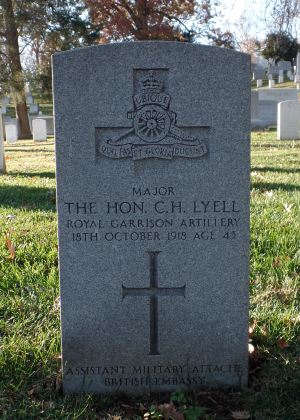
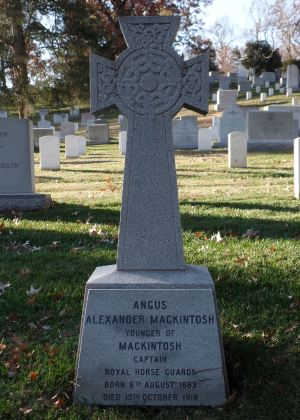
Major the Hon. Charles Henry Lyell is also commemorated on the Houses of Parliament War Memorial in Westminster Hall and in The House of Commons Book of Remembrance 1914-1918 and in The House of Lords, In Piam Memoriam, MCMXIV-MCMXIX. In Scotland, he is commemorated by a brass plaque and by the east window at St Mary’s Episcopal Church, Kirriemuir, which was dedicated on Sunday 31 August 1924, and on Kirriemuir War Memorial. He is also remembered on the Mortonhall Golf Club Memorial.
Lyell’s son, Charles Anthony Lyell, succeeded his grandfather to both the baronetcy and barony in 1926. During the Second World War he served with 1st Battalion, Scots Guards. He was awarded a posthumous Victoria Cross on 12 August 1943, for his actions on 27 April at Dj Bou Arara in Tunisa.[12] He is buried in Massicault War Cemetery. He is commemorated on the Marylebone Cricket Club Roll of Honour, on the Kirriemuir War Memorial and on the memorial in Kirriemuir Barony Parish Church. He is also commemorated on a memorial slab at Cumberland Close, Kirriemuir.
In 1937 Lyell’s daughter married The Hon. Francis Alan Stewart-MacKenzie of Seaforth, a pre-war Territorial Army officer in the Royal Regiment of Artillery. He was killed in action in Italy on 11 September 1943 serving with 98th (The Surrey and Sussex Yeomanry Queen Mary’s) Field Regiment. He is buried at Salerno War Cemetery beside his brother, Major the Hon. Michael Victor Brodrick MC, Coldstream Guards, who was killed in action the previous day serving with the 3rd Battalion.
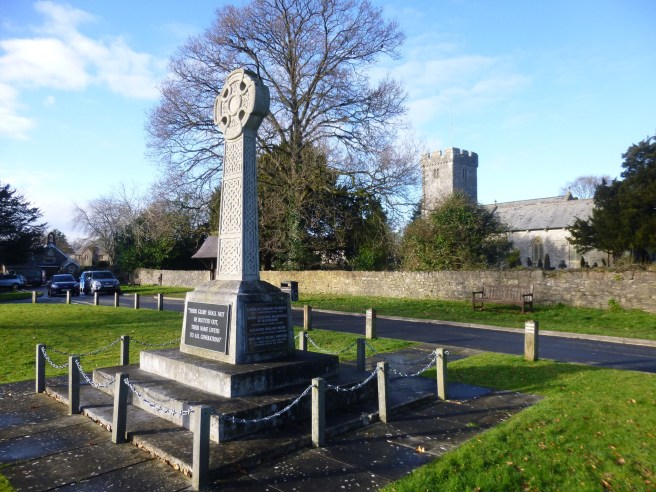
Captain Angus Alexander Mackintosh, younger of Mackintosh is also commemorated on the war memorial in St Nicholas, in the Vale of Glamorgan, and on the remote Strathdearn War Memorial in the Scottish Highlands.
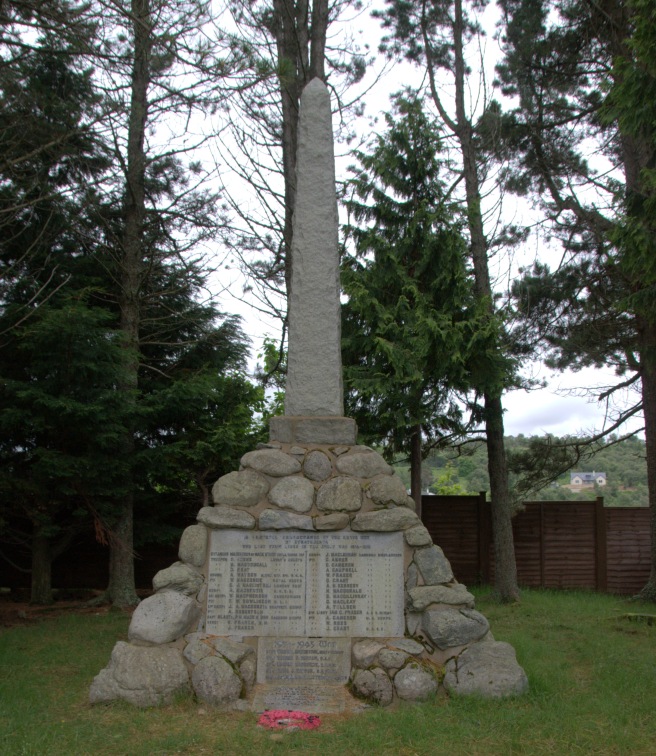
Lady Maud Mackintosh remarried in 1923. Her husband, Major Hon. George Evan Michael Baillie MC, served with the Royal Horse Artillery during the First World War. On 6 June 1941, Brigadier Hon. Evan Baillie MC, TD died following a medical procedure. Lady Maud served during the Second World War as a Controller with the Auxiliary Territorial Service, for which she was made a Commander of the Order of the British Empire in 1945.[13] She died on 30 March 1975.
The medals group of Major the Honourable Charles Henry Lyell comprises:1914-15 Star; British War Medal 1914-20; and Victory Medal with mention in despatches emblem.
The medals group of Captain Angus Alexander Mackintosh, younger of Mackintosh comprises:1914-15 Star clasp with clasp ‘5TH AUG.-22ND NOV. 1914’; British War Medal 1914-20; Victory Medal; and Coronation Medal 1911.
Sources:
The National Archives (TNA). Public Record Office (PRO). (1914-1918). Service Record: Major Charles Henry Lyell, Royal Garrison Artillery. WO 374/43352.
TNA. PRO. (1915-1918). Service Record: Captain Angus Alexander Mackintosh, Royal Horse Guards. WO 339/6527.
Acknowledgement:
Martin Briscoe for the photograph of Strathdearn war memorial.
Dr Kerr Fraser for the photograph of Mortonhall Golf Course War Memorial.
1. (Back) Major General James Douglas McLachlan CB, CMG, DSO was born in Samarang, Java on 14 February 1869. Commissioned into The Queen’s Own Cameron Highlanders in 1891, he took part in the Nile Expedition in 1898 and the battle of Khartoum. He took command of the 1st Battalion in March 1913 and led it to France in the early stages of the war until September 1914, when he was severely wounded. He then commanded 8th Infantry Brigade from October 1915 to March 1916. He was awarded the Distinguished Service Order (June 1916) and mentioned in despatches twice (January 1916 and June 1916). He served on the staff as a Brigadier General before being appointed as the first wartime military attaché to the United States. He arrived in Washington with his assistant military attaché, Lieutenant Colonel The Hon A C Murray DSO, MP, on 11 September 1917. In-post, he was promoted to Major General. He was made a Companion of the Order of the Bath in June 1918 and a Companion of the Order of St Michael and St George in June 1919. He relinquished his post in June 1919, and reverted to his substantive rank of Colonel. He was awarded the United States Distinguished Service Medal in July 1919. He died on 7 November 1937.
2. (Back) Part of Southern Group, later No. 1 Group Heavy Artillery Reserve. Later equipped with six 60-pounder guns.
3. (Back) London Gazette 4 January 1917. Issue 29890, p 213.
4. (Back) Members of Parliament are not permitted to resign their seats. The mechanism of appointment to the sinecure post of Steward and Bailiff of the Three Chiltern Hundreds of Stoke, Desborough and Burnham, in the county of Buckingham, mandated that an MP stand down because, by law, he could not hold an office of profit under the Crown.
5. (Back) The National Archives (TNA). Public Record Office (PRO). (1914-1919). WO95/1156-3. The Royal Horse Guards War Diary.
6. (Back) Op. Cit.
7. (Back) TNA. PRO. (1914-1919). WO95/3988-91. Matron-In-Chief, British Expeditionary Force, France And Flanders War Diary. (This dairy and other notes may be read on Scarlet Finders.)
8. (Back) SS Missanabie was an armed passenger liner of the Canadian Pacific Line, which sailed throughout the war between Canada and Liverpool. On 9 September 1918 she was sunk by U87, 50 miles off the coast of Ireland, with the loss of 45 lives.
9. (Back) London Gazette 27 October 1916. Issue 29804, p 10417.
10. (Back) Lady Maud Louisa Emma Cavendish was born on 20 April 1896.
11. (Back) Here you can read more about the influenza pandemic in Washington DC.
12. (Back) London Gazette 12 August 1943. Issue 36129, p 3625.
13. (Back) London Gazette 1 January 1945. Issue 36866, p 10.


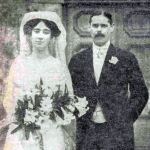
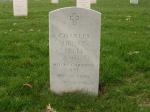
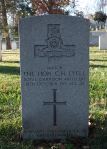
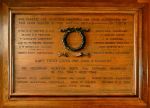
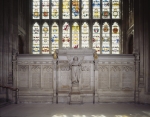
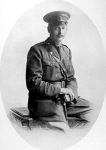
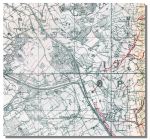
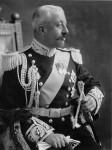


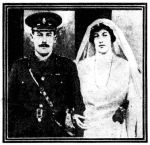

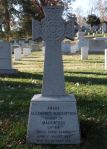
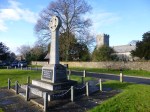
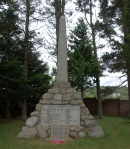
One thought on “The Military Attachés”